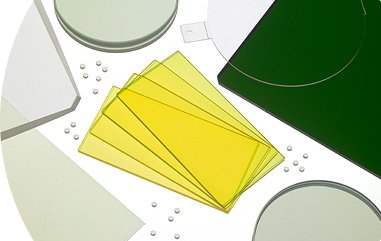“Anti-reflective” and “anti-glare” are common terms related to coating, but they are each distinct and provide different benefits. Depending on a particular application, an anti-reflective or anti-glare coating may be appropriate to use. Knowing what separates these two concepts can help determine which is best to use for a given coating.
Here, we’ll review the differences between anti-reflective and anti-glare coatings and the common applications for each.
Key Differences Between Anti-Reflective vs. Anti-Glare
![]() When deciding whether to use anti-glare vs. anti-reflective coating, there are a few distinct differences to keep in mind.
When deciding whether to use anti-glare vs. anti-reflective coating, there are a few distinct differences to keep in mind.
Anti-Reflective
Anti-reflective coatings feature:
- The ability to decrease power output for LED lighting and displays, making it suitable for many types of ambient lighting
- High transmission with reduced reflectance
- Reduced ghost images
- Increased brightness and glass transmission
- Enhanced contrast to create clear, sharp text and graphics
- The ability to customize it for precise light wavelengths
Anti-Glare
For other applications, features of anti-glare coatings include:
- Suitability with high-ambient or outdoor light applications with external sources of reflection
- High resolution with low reflection, along with an anti-newton ring and high durability
- Acid etching on one or two glass surfaces
- Dispersal of light on glass surface as light hits it
- Maintains low reflection when exposed to oily fingerprints, unlike untreated surfaces or glass with anti-reflective coating
Anti-Reflective Coated Glass Applications
 Anti-reflective coatings are suitable for many applications requiring optimal image quality. This is because they consist of a single or multiple layers, which are intended to create destructive interference in reflected light. In turn, this permits the maximum level of light transmission without sacrificing image quality.
Anti-reflective coatings are suitable for many applications requiring optimal image quality. This is because they consist of a single or multiple layers, which are intended to create destructive interference in reflected light. In turn, this permits the maximum level of light transmission without sacrificing image quality.
There are several applications that are compatible with anti-reflective coated glass, including:
- LCD Displays
- LED Lighting Optics
- Telecommunications
- Front Panel Displays
Anti-Glare Coated Glass Applications
Like anti-reflective coatings, anti-glare coatings can disperse reflected light, enabling users to focus on a transmitted image, making it suitable for a variety of applications requiring high-quality images. However, unlike anti-reflective glass, anti-glare coated glass is also ideal for more interactive technology that requires users to touch screens with their hands, as it prevents oil from decreasing picture quality. Additionally, anti-glare glass features varying etching and quality levels, ranging from 60 to 130 gloss units for optimizing display or picture frame quality. A low gloss level of around 60 units will lead to a more diffuse panel surface, significantly reducing glare. On the other hand, a higher diffusion level can also decrease panel resolution.
Some specific applications for anti-glare coatings include:
- Computer Screens
- LCD Displays
- Electronic Displays
- Medical Instrumentation
- Touch Screens
